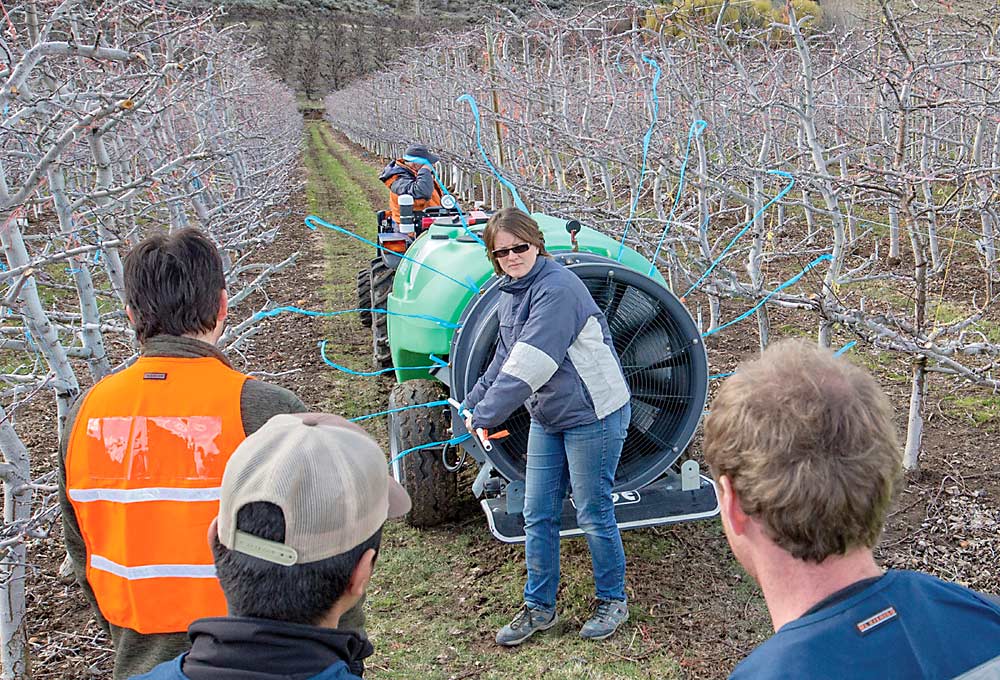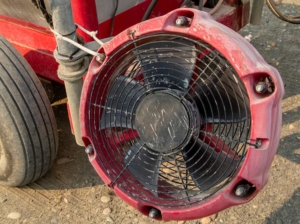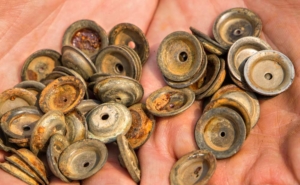
You’ve developed a textbook spray program — bought the most effective products and figured out the ideal timings. But the day you’re ready to start, you discover your sprayer is broken.
Washington State University associate professor and viticulture specialist Michelle Moyer invoked that headache-inducing scenario during the Great Lakes Fruit, Vegetable and Farm Market EXPO in Grand Rapids, Michigan, in December.
The lesson: How you spray can override what you spray.
“Chemicals don’t spray themselves,” she said. “So, why do we ignore sprayers?”
Moyer gave the first talk during an educational session on pesticides, and she focused on equipment maintenance and sprayer calibration. She said most of her recommendations were intended for vineyards, but some were applicable to any perennial crop system.
Moyer said routine sprayer maintenance and optimization is essential to any spray program. Ideally, it would be done throughout the season, but a sprayer checkup should be done at least once a year, preferably in spring before spray season gets going.
First and foremost, make sure the sprayer is functioning properly. Check the filters. Clean the tanks and lines. Replace or repair all nozzles. Make sure the tubes and other movable parts are still working. Check ground speed and tire inflation. Check the pressure gauges.
“Most pressure gauges are broken on most sprayers, by the way,” Moyer said.
Tank leaks are common, too, which can affect product concentration.
Make sure your fan blades are fully functional. A broken fan blade can change air movement patterns, causing a lot of spray to hit some parts of the canopy and very little spray to hit others, Moyer said.
Nozzles are a crucial part of any sprayer. Nozzle type influences droplet size and drift potential. Some nozzles might not be necessary for the size of canopy you’re spraying and should therefore be turned off.
“Familiarize yourself with types of nozzles and see if that is a place you can potentially improve on for next season,” Moyer said. “Nozzles are cheap relative to all the stuff that you run through that tank.”
Some Eastern Washington growers turn off the air in their airblast sprayers early in the season and use air induction nozzles to create bigger droplets. Larger droplets are more likely to shatter when they hit leaves, as opposed to bouncing off like regular droplets sometimes do, she said.
Rate controllers can adjust how much product per acre is being sprayed, based on tractor speed and other variables, but something as simple as over- or under-inflated tires can affect their performance.
“Rate controllers are great, but every other aspect of your machine has to be working properly for them to work properly,” she said.
Moyer also gave some basic spraying advice. She said more growers these days are running spray programs based on plant development, as opposed to starting on a set date. This technique wastes less product.
“Don’t spray for a disease if it’s not there,” Moyer said. “Start at a certain plant development stage where disease development might also begin, then get on more of a calendar basis to maintain efficacy.”
Weather conditions are important. If it’s too windy, the spray can miss the target. If there’s no wind at all, it can lead to long drift. High temperatures and low humidity shrink spray droplets, which increases drift and evaporation. The best time to spray is when temperatures are between 50 and 80 degrees Fahrenheit and humidity is greater than 40 percent. These conditions usually occur in the early morning hours, she said.
Moyer recommended short spray intervals (five to 10 days) during periods of fast plant growth (usually early in the season) or periods of rain or high humidity, when diseases can rapidly develop. She recommended long spray intervals (10 to 14 days) during periods of slow plant growth or low disease pressure. Spray intervals, however, should be considered in the context of the product label recommendation, she said.
Moyer also recommended spraying every row, as opposed to every other row.
“Years and years of sprayer research has shown that the coverage you get on blow-through rows is not the same as the coverage you get on rows you actually spray,” she said. “Do not rely on blow-through, especially once you actually have a canopy developing. It’s not going to give you the coverage and control you need.”
—by Matt Milkovich








Leave A Comment